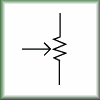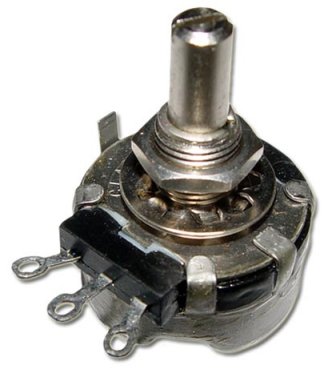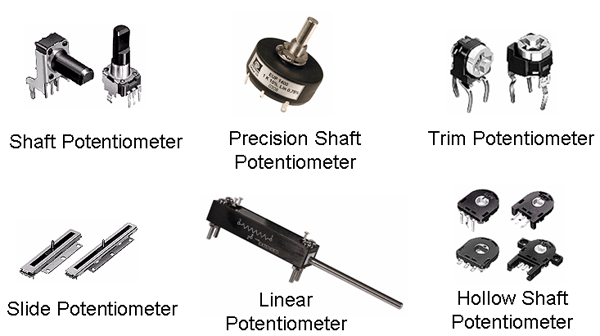Potentiometers are Variable Resistors
Types of Pots
There are many different types of pots, though they usually have very subtle differences and can be hard to tell apart. Below are several common types of pots.
- Shaft Potentiometer - The most common type, also come in high-precision versions. The shaft can be turned by hand or attached to some device. Some of these cannot turn complete circles while others can turn all the way (continuous turn). Some are also made to turn around multiple times (multi-turn) to sweep the entire resistance range.
- Trim Pots - These pots are commonly attached to circuit boards when it may be necessary to add tuning to a circuit. They are very small and may require a small screwdriver to turn.
- Linear & Slide Pots - These pots move in a linear motion. Slide pots are used for user-controlled tuning and would be found in such devices such as light dimmers. Linear pots are made to be mounted onto a device to measure linear position.
- Hollow-Shaft Pots - These are used in place of shaft potentiometers when space is limited. They are very thin (~3mm) and mount around a rotating shaft.
Applications
A rotary potentiometer can be used to measure the rotation of a shaft. It is easiest to use if the shaft being measured does not need to rotate continuously, but rather has a range of motion of less than 360 degrees. You can attach the pot to a shaft via gears. By using a gear ratio other than 1:1, you can adjust the range of motion and precision of your angular sensor.
Linear and Audio Taper
The taper of a pot refers to the way its resistance changes as the shaft is rotated. A linear taper pot is exactly what you would guess it to be, a graph of resistance (from one end to center) versus shaft rotation would be a straight line. If you tried to use a linear taper pot as a volume control you would be most unhappy with its performance. The sound level would go from nothing to almost full volume in about the first ten degrees of rotation and the rest would have almost no audible effect. This is because the ear responds to sound logarithmically rather than linearly. That's why sound engineers use the decibel which is a logarithmic function of power. An audio taper pot has a function which approximates a logarithmic function.
The way to identify an audio taper pot is to set it to half rotation and measure from center to each end with an ohmmeter. If the resistances are approximately equal you have a linear pot. If the resistance from the counter clockwise end to center is about 10% of the total and the resistance from the clockwise end to the center is about 90% then you are holding an audio taper pot.


